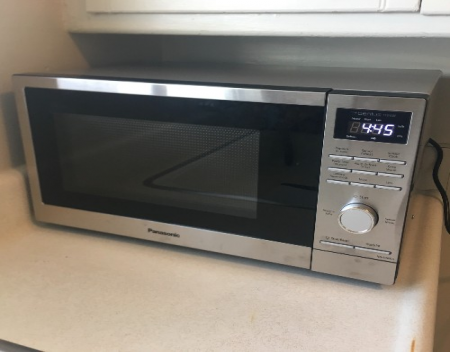Tipos de aparatos
- Aire acondicionado
- Automobile
- Chainsaw
- Circular Saw
- Lavaplatos
- Drills
- Secadora
- Drywall Screw Gun
- Horno
- Gas Fireplace
- Gas Grill
- Gas Patio Heater
- Grinder
- Heat Pump
- Impact Driver
- Impact Wrench
- Microonda
- Nailer
- Orbital Sander
- Calentadores de piscina
- Powerwall
- Distancia
- Refrigerador
- Television
- Lavadora
- Calentador de agua
Marcas de electrodomésticos
- A.O. Smith
- AccuCold
- Admiral Craft
- AGA
- Airrex
- Amana
- Ambiance
- American Range
- American Standard
- American Water Heaters
- Aquacal
- Armstrong
- Asko
- Avanti
- Avenlur
- Azure
- Beko
- Bellfires
- Bertazzoni
- Blackstone
- Blaze
- Blomberg
- BlueStar
- Bosch
- Bradford White
- Bromic
- Bryant
- Cafe
- Calcana
- Capital
- Carrier
- Char-Broil
- Char-Griller
- Chrysler
- Coates
- Coleman
- Comfortmaker
- Commercial Chef
- Continental
- Cosmo
- Cove
- Crown Verity
- Dacor
- Daikin
- Danby
- Danfoss
- DaVinci
- DCS
- Deco
- DeWALT
- Ducane
- Dyna-Glo
- Dyson
- EcoSmart
- Electrolux
- Element4
- Empava
- Equator
- Eurodib
- European Home
- Everdure
- Farberware
- Fhiaba
- FibroPool
- Fire Sense
- Fisher
- FiveStar
- Flare
- Flash Furniture
- Focus
- Ford
- Forno
- Forte
- Frigidaire
- Fulgor Milano
- Gaggenau
- GE
- General Motors
- GlowBrand
- Goodman
- Grundig
- GSW
- Haier
- Hayward
- Heatstar
- Heil
- Hestan
- Hisense
- Hitachi
- Hotpoint
- iio
- Ilve
- Impecca
- Ingignia
- Insignia
- JennAir
- John Wood
- Keeprite
- Kenmore
- Kenyon
- KitchenAid
- Kucht
- La Cornue
- Lennox
- LG
- Liebherr
- Lifetime
- Lion
- Luxaire
- Lynx
- Magic Chef
- Marvel
- Maytag
- McQuay
- MicroFridge
- Midea
- Miele
- Migali
- Monogram
- Montigo
- Mr Heater
- Napoleon
- Navien
- Nexgrill
- Noritz
- Panasonic
- Patio Comforts
- Payne
- Pentair
- Perlick
- PITT
- Premier
- Raypak
- Real Fyre
- Regency
- Reliance
- Rheem
- Rinnai
- Roma
- Ruud
- Saber
- Samsung
- Schwank
- Sharp
- Smeg
- Solas
- Sony
- Spartherm
- Speed Queen
- StaRite
- State Water Heaters
- Stiebel Eltron
- SubZero
- Summerset
- Summit
- SunGlo
- SunPak
- Sunpentown
- SunStar
- Superiore
- Takagi
- TCL
- TEC
- Tempstar
- Tesla
- Thermador
- Thor Kitchen
- Toshiba
- Town and Country
- Toyota
- Traeger
- Trane
- Twin Eagles
- U-Line
- Unique
- Vaillant Group
- Valor
- Verona
- Victory
- Viessmann
- Viking
- Vizio
- Weber
- Westinghouse
- Whirlpool
- Whynter
- York
- ZLINE
Categorías de artículos
- Aire Acondicionado
- Cuidado de los electrodomesticos
- Appliance News
- Dishwasher News
- Maquinas de secado
- Hornos
- Gas Fireplaces
- Microondas
- Calentadores de piscina
- Frigorificos
- Estufas - Cocinas
- Trucos y consejos
- Lavadoras
- Water Heaters
Más artículos
5 Reasons Why a Microwave Wont Heat

Diode.
The diode converts the A/C power output of the transformer to D/C, doubling the voltage to nearly 5,000 volts. This high voltage powers the magnetron to heat the food. If the diode burns out, the magnetron won’t receive enough voltage to operate, preventing the microwave from heating. When the diode fails, it is often visibly burned out. Inspect the diode and if the diode is burned out, replace it. If inspecting the diode proves inconclusive, test it with a multimeter that uses a 9-volt battery or put a 9-volt battery in series with the diode. When the leads are reversed, the diode should only have continuity in one direction. (Warning: The microwave oven can store a lethal amount of electricity in its high voltage capacitor, even after the microwave oven has been unplugged. Due to the high running voltage and the potential for electric shock, it is extremely dangerous to replace the electronic components in a microwave. Only a licensed technician should replace the diode.)
Door Switch.
Most microwaves have three or four door switches. When the microwave door closes, the door switches actuate in sequence to ensure that the door is closed properly. If any of the door switches fails, the microwave will not start or heat. To determine if any of the door switches are defective, use a multimeter to test each of the switches for continuity. If any of the door switches does not have continuity, replace them. (Caution: The microwave oven can store thousands of volts of electricity in its high voltage capacitor, even after the microwave oven has been unplugged. Due to the potential for electric shock, it is extremely dangerous to replace the electronic components in a microwave. Only a licensed technician should replace a door switch.)
Magnetron.
The magnetron uses high voltage, high current DC power to generate the microwave frequency that cooks the food. If the magnetron burns out, the microwave won’t heat. The magnetron is not repairable—if the magnetron is burned out, you must replace it. (Warning: The microwave oven can store a lethal amount of electricity in its high voltage capacitor, even after the microwave oven has been unplugged. Due to the high running voltage and the potential for electric shock, it is extremely dangerous to replace the electronic components in a microwave. Only a licensed technician should replace the magnetron.)
High Voltage Capacitor.
The high voltage capacitor works with the high voltage diode to convert the output of the transformer to DC voltage and double the output voltage. If the capacitor is burned out, the entire high voltage circuit will stop working properly, and the microwave won’t heat. To determine if the high voltage capacitor is defective, use a VOM meter with a capacitance testing capability. (“Warning: The microwave oven can store a lethal amount of electricity in its high voltage capacitor, even after the microwave oven has been unplugged. Due to the high running voltage and the potential for electric shock, it is extremely dangerous to replace the electronic components in a microwave. Only a licensed technician should replace the high voltage capacitor.)
High Voltage Transformer.
Microwave ovens produce a very high voltage in order to power the magnetron antenna, which emits the energy that cooks the food. When a high voltage transformer fails, it will usually arc and have a burning smell. (Warning: The microwave oven can store a lethal amount of electricity in its high voltage capacitor, even after the microwave oven has been unplugged. Due to the high running voltage and the potential for electric shock, it is extremely dangerous to replace the electronic components in a microwave. Only a licensed technician should replace the high voltage transformer.)
SOURCE: repairclinic.com

Diode.
The diode converts the A/C power output of the transformer to D/C, doubling the voltage to nearly 5,000 volts. This high voltage powers the magnetron to heat the food. If the diode burns out, the magnetron won’t receive enough voltage to operate, preventing the microwave from heating. When the diode fails, it is often visibly burned out. Inspect the diode and if the diode is burned out, replace it. If inspecting the diode proves inconclusive, test it with a multimeter that uses a 9-volt battery or put a 9-volt battery in series with the diode. When the leads are reversed, the diode should only have continuity in one direction. (Warning: The microwave oven can store a lethal amount of electricity in its high voltage capacitor, even after the microwave oven has been unplugged. Due to the high running voltage and the potential for electric shock, it is extremely dangerous to replace the electronic components in a microwave. Only a licensed technician should replace the diode.)
Door Switch.
Most microwaves have three or four door switches. When the microwave door closes, the door switches actuate in sequence to ensure that the door is closed properly. If any of the door switches fails, the microwave will not start or heat. To determine if any of the door switches are defective, use a multimeter to test each of the switches for continuity. If any of the door switches does not have continuity, replace them. (Caution: The microwave oven can store thousands of volts of electricity in its high voltage capacitor, even after the microwave oven has been unplugged. Due to the potential for electric shock, it is extremely dangerous to replace the electronic components in a microwave. Only a licensed technician should replace a door switch.)
Magnetron.
The magnetron uses high voltage, high current DC power to generate the microwave frequency that cooks the food. If the magnetron burns out, the microwave won’t heat. The magnetron is not repairable—if the magnetron is burned out, you must replace it. (Warning: The microwave oven can store a lethal amount of electricity in its high voltage capacitor, even after the microwave oven has been unplugged. Due to the high running voltage and the potential for electric shock, it is extremely dangerous to replace the electronic components in a microwave. Only a licensed technician should replace the magnetron.)
High Voltage Capacitor.
The high voltage capacitor works with the high voltage diode to convert the output of the transformer to DC voltage and double the output voltage. If the capacitor is burned out, the entire high voltage circuit will stop working properly, and the microwave won’t heat. To determine if the high voltage capacitor is defective, use a VOM meter with a capacitance testing capability. (“Warning: The microwave oven can store a lethal amount of electricity in its high voltage capacitor, even after the microwave oven has been unplugged. Due to the high running voltage and the potential for electric shock, it is extremely dangerous to replace the electronic components in a microwave. Only a licensed technician should replace the high voltage capacitor.)
High Voltage Transformer.
Microwave ovens produce a very high voltage in order to power the magnetron antenna, which emits the energy that cooks the food. When a high voltage transformer fails, it will usually arc and have a burning smell. (Warning: The microwave oven can store a lethal amount of electricity in its high voltage capacitor, even after the microwave oven has been unplugged. Due to the high running voltage and the potential for electric shock, it is extremely dangerous to replace the electronic components in a microwave. Only a licensed technician should replace the high voltage transformer.)
SOURCE: repairclinic.com




